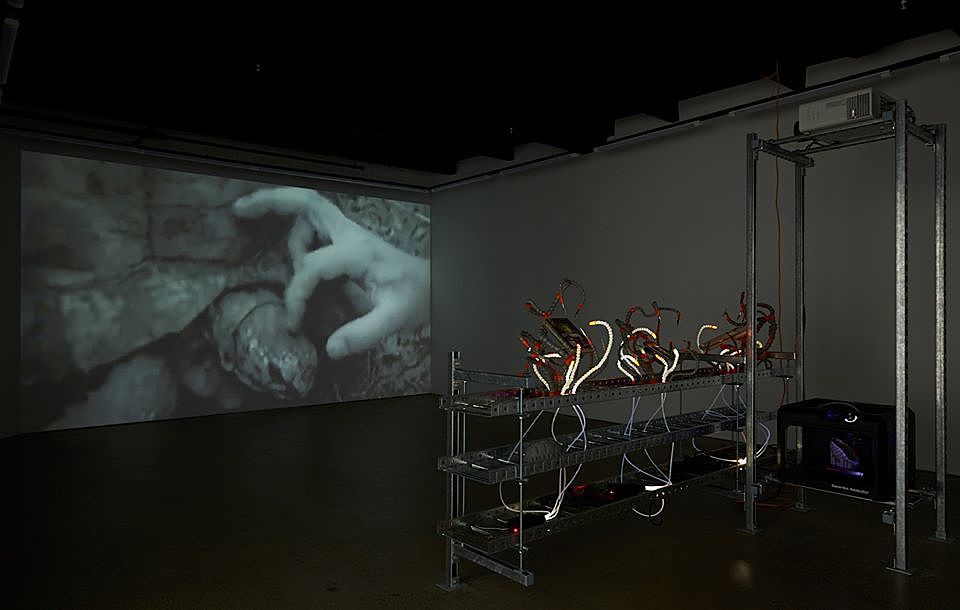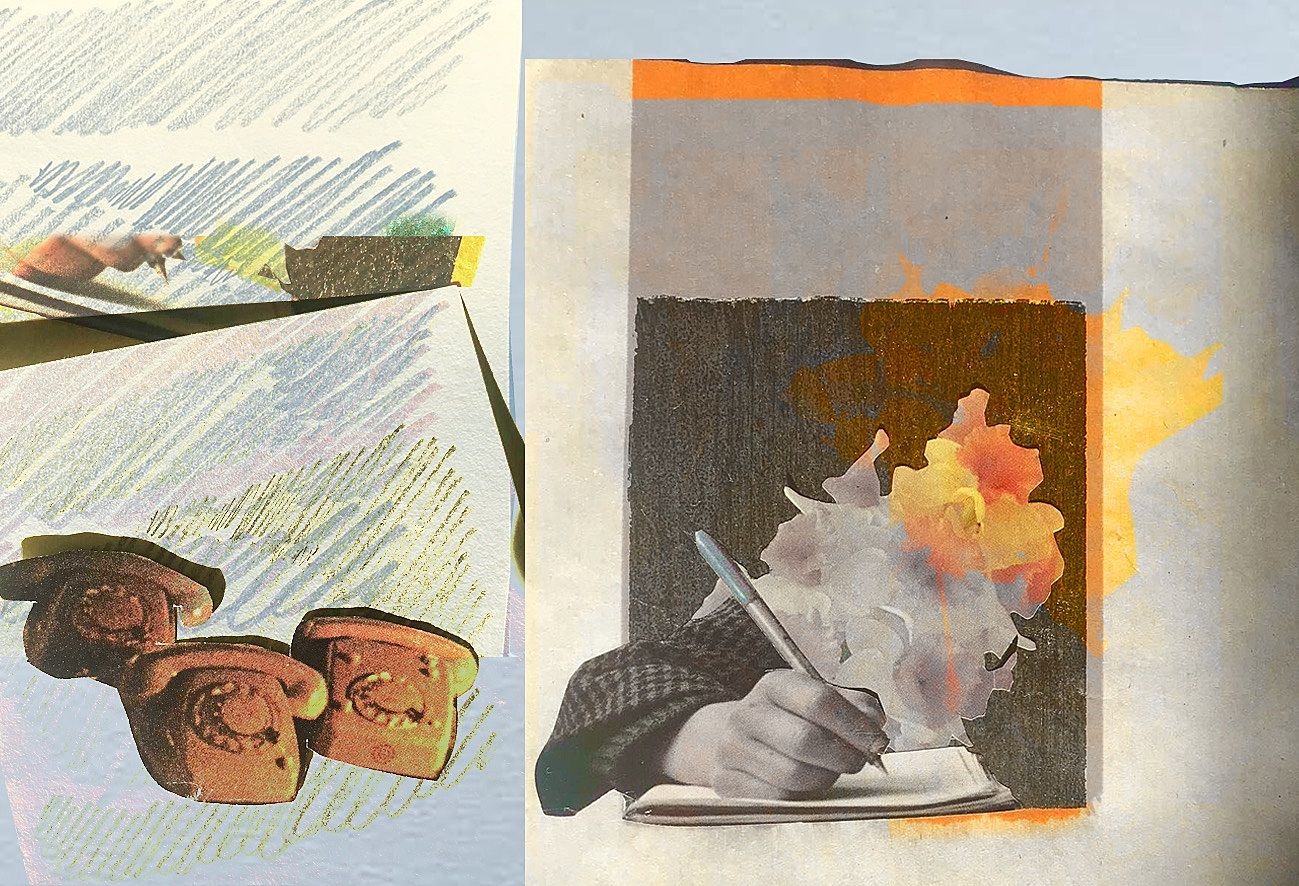The Unmissables: Three Exhibitions to see in November
The best art on show this month in the dealer galleries of Tāmaki Makaurau Auckland.
A monthly round-up of artworks in Tāmaki Makaurau that we keep returning to.
Manta rays, tortoises and talking trees: Artists John Ward Knox, Eddie Clemens and Anne Noble play with ideas of ecological care, climate change and wild Earth in the exhibitions of this month’s Unmissables.
Once again, our team of art critics, Lucinda Bennett, Lana Lopesi and Francis McWhannell, has searched the city to find the best art on show this month in the dealer galleries of Tāmaki Makaurau.
For several years, multidisciplinary artist John Ward Knox has been making photograph-like paintings on translucent fabrics, such as silk and calico. The supports produce a subtle backlighting, lending the images they carry a ghostly ephemerality. In his latest exhibition, reys, the pictorial slipperiness has increased. Each work comprises two stretchers, one mounted over the other. Each stretcher shows the same subject at a distinct point in time. The effect is almost holographic, the picture flickering between states according to your viewpoint, or the locus of your attention.
The works form two series: inis and ray. The first is based on Man of Aran, a 1934 film that promoted the resilience of the inhabitants of the eponymous island (inis in Irish translates as ‘island’ or ‘standing in water’). The artist notes that the series alludes to the rise of nationalist movements today, as well as the increasing precarity of island life as a consequence of climate change. Ray depicts manta rays. The adaptive colouration of the animals – dark on top, light underneath – echoes the construction of Ward Knox’s double images, while their bodies in motion recall waves (of water, sound and light), which surface in a number of his past works.
The exhibition title is ambiguous in pronunciation and may be read as both ‘rays’ and ‘race’. It is also a Middle English term, meaning journey or military expedition. I find myself thinking of impoverished families journeying from one cluster of islands to another, settled by force. I think, too, of Ward Knox relocating from ray-shaped Te Ika-a-Māui to Ōtepoti Dunedin: Edinburgh reimagined on Te Waipounamu. History flickers, like the individual lives that comprise it – apprehensible, but never with ease. – FM
John Ward Knox
reys
Ivan Anthony
23 October – 16 November
The intersection of formalist sculpture and the investigation of technology, geography and pop culture has become the sweet spot for Auckland-based artist Eddie Clemens. With previous projects that have taken him to Rotorua’s sister cities – Kyūshū, Japan; Klamath Falls, Oregon; Lake Macquarie, Australia; and Wuzhong, Suzhou, Jiangsu, China – Clemens is no stranger to sewing together formerly obscure references, to construct meta-narratives of human relationships to each other and place. This is observed in his current project, First Edition, Third Hand (2019) at Bowerbank Ninow.
A few years ago, Clemens heard that the Auckland War Memorial Museum held an object which related to the 1982 science fiction film Blade Runner. After a bit of research, Clemens learnt of Tu’i Malila, a Madagascan radiated tortoise given to the Tongan royal family by Captain Cook in 1777. The tortoise was 188 years old when it died in 1965. Tu’i Malila was once in the care of Auckland Museum, who taxidermied the tortoise. The reference to Blade Runner? The story of Tu’i Malila features as the epigraph in Philip K. Dick’s novel Do Androids Dream of Electric Sheep? that the film was based on. Tu’i Malila acted as “a talisman for what the author perceived as the vanishing of authentic human experiences, such as empathy for animals, and their replacement by simulated equivalents.”
For Clemens, the connection between Tu’i Malila and Blade Runner locates the cyborg in the Pacific and is the focus of Clemens’ third solo show First Edition, Third Hand. A sculptural work, First Edition, Third Hand uses science fiction to raise questions around permanence and erasure; ecological care and imminent destruction; and the purpose of new and antiquated technologies. Clemens’ work is packed full of references and histories that require time and return visits. Both dystopic yet hopeful, First Edition, Third Hand makes peculiar yet intriguing connections. An exciting first edition of this ongoing project. – LL
Eddie Clemens
First Edition, Third Hand
Bowerbank Ninow
31 October – 23 November
When I think of Anne Noble, I think surface and texture. Thin papery skin, saliva-slick lollies melting in warm little mouths, the fine static fur on the neck of a honeybee, the dry edges of an iceberg. Hers are photographs that meld the senses, that unfold slowly. She has previously referred to her series as ‘essays’, but for me they read more like poems, especially as they often seem to flow into metaphor.
At first, I think her new series, Observations from the Critical Zone, is not photographic at all. The works appear like fine sheets of rusted metal mounted in black frames. They feel, and the title implies, that these panels are post-apocalyptic remnants, fragments from a civilisation now destroyed. Upon closer inspection and consultation of the exhibition text (written by Noble herself), I come to understand I am viewing images taken from film that has been buried in the ground between two trees. Noble explains that her intention was to “trace tree signatures”, adopting quasi scientific methods to answer a question posed in the poetry of Pablo Neruda – Do trees talk? And if they talk, how might we understand them?
Some will find this project a bridge too far into whimsical territory. Personally, I am firmly for whimsy in art. Why not explore the possibility of magic, why not ask questions of the world? If we cannot do this in the realm of art, where can we? However, the sceptical may be coaxed by the materiality of the works themselves: these are not light-hearted images. The view of nature conveyed by these photographs is not serene and generous but dangerous, wet, mouldering, ancient. I am reminded of Donna Haraway’s unsanitised descriptions of earth, portrayals that emphasise the awe we should feel in the face of something powerful and unknowable, whose fate and caprices we are tied to. – LB
… I am really interested in an older, wilder Gaia, in the Gorgones, the Nagas, Pachamama, Oya in more and other than Gaia … But I want to cast my lot with the ongoing, unfinished, dreadful powers of the Earth, where the risk, terror, and promise of uncategorisable mortal ongoing can still be found … – Donna Haraway
Anne Noble
Observations from the Critical Zone
Two Rooms
1–30 November
The Unmissables is presented in a partnership with the New Zealand Contemporary Art Trust, which covers the cost of paying our writers. We retain all editorial control.









